Proceedings of Presented Papers, The Parapsychological Association, 47th Annual Convention, Jan 1, 2004
A number of extremely small groups within the population that are in the possession of distinct '... more A number of extremely small groups within the population that are in the possession of distinct 'gifts' or 'abilities' such as absolute pitch, synesthesia, and mental calculations skills, are identified and placed in a parallel with the likewise small group of 'sensitives' and 'mediums' in parapsychology. The widely discussed question whether 'psi' is 'democratically' distributed is touched upon as it appears that these other abilities are definitely not equally distributed. (This is a touchy subject in our society: whether or not all humans are in a certain sense equal or whether there are some differences.) Some parallels (and differentiations, too) between the two groups (absolute pitch, synesthesia, and mental calculation skills on one hand and 'sensitives' and 'mediums' on the other) are examined, e. g. the fact that these properties can hardly be trained either they are present or they arenot. Absolute pitch and mental calculations are 'composite' functions, in both cases the ability to memorize plays an important role. The question raises whether 'psi' is perhaps also a cluster of different abilities, apart from the problem that the entire notion of 'psi' as an 'ability' is highly questionable. Another question is the consistency of performance, be it the performance of one individual at different times (intrasubjective) or be it within several individuals (intersubjective) as in the case of comparative studies of sensitives and mediums. The emphasis of the paper, however, is on the fact that mainstream psychology and physiology carry out research into the particular abilities of very special persons who are clearly different from the vast majority and who form an extremely tiny minority of the population (in the case of the Mathematical Wizards just a handful individuals all over the world at any one time). From the point of philosophy of science this research may serve as a precedent for the legitimacy of research into the likewise rare 'gifted' people called sensitives or mediums. Thus their small sample size cannot be used as an argument against this kind of research. The lesser the number of individuals on one hand, the more outstanding and unique their performance on the other investigations will progressively shift of from the 'nomothetic' to the 'idiographic' pole.
Besides these 'strange' people the situation of rare or even unique events is discussed. Here again the idiographic and the nomothetic approach are balanced against one another, viewing upon the 'rare events' once more from the point of philosophy of science. Thus, without going into details of methodological issues it is argued that research into these fields, too, has some precedence in mainstream science. Not only is such research legitimate, moreover, any challenges to it (both from the skeptics' camp and from inside the parapsychological community) based on the sole ground of the rareness of cases must be rejected with reference to the outlined precedents in mainstream science.


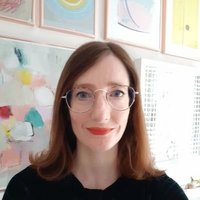
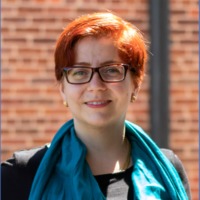
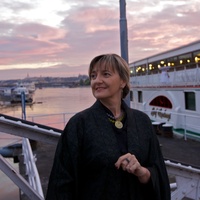

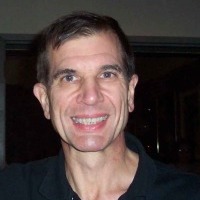


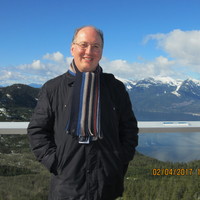

Uploads
Papers by Peter Mulacz
• Field study―observations during my participation in a Dervish piercing ceremony
• “MIRIN DAJO”―a case study in a European person having been able to demonstrate
equivalent phenomena (labelled a European example of fakirism)
• Theoretical considerations leading to an explanation of these phenomena
• Conclusions
• Field study―observations during my participation in a Dervish piercing ceremony
• “MIRIN DAJO”―a case study in a European person having been able to demonstrate
equivalent phenomena (labelled a European example of fakirism)
• Theoretical considerations leading to an explanation of these phenomena
• Conclusions
English Abstract:
Levitation of catholic saints (particularly St. Joseph of Copertino, however, a total of 100 approx) compared to levitation of 'physical mediums'' in parapsychology, e.g. D.D. Home, Indridi Indridason, Rudi Schneider. The focus is on the fact that the phenomenon included objects and even persons that were in contact with the saint or medium (Indridi Indridason lifted together with the chair he was sitting on, St. Joseph taking other persons he grabbed with him into the air). It appears not only the levitating individual is affected, rather there develops kind of 'field' where (hitherto unknown) forces act, overruling the known physical ones (equivalent to the lift generated on an airfoil according Bernoulli's law overrules gravity).
Abstract in English:
Out of Body Experiences: the traditional aka religious vs. the 'scientific' aka materialistic interpretations of the mind-body (mind-brain) problem, the "hard problem" (qualia) etc., furthermore case reports through history etc. -- all these presented as a foundation for discussing the experimental approach to OBEs. The emphasis of this presentation is on the experiments carried out by the late Karlis Osis at the ASPR using sophisticated devices of his own design (recording the data automatically) in order to tell OBE apart from clairvoyance. (Including links to youtube video clips that are an integral part of this presentation.)
Besides these 'strange' people the situation of rare or even unique events is discussed. Here again the idiographic and the nomothetic approach are balanced against one another, viewing upon the 'rare events' once more from the point of philosophy of science. Thus, without going into details of methodological issues it is argued that research into these fields, too, has some precedence in mainstream science. Not only is such research legitimate, moreover, any challenges to it (both from the skeptics' camp and from inside the parapsychological community) based on the sole ground of the rareness of cases must be rejected with reference to the outlined precedents in mainstream science.
ever reported in such cases. Rather, the aim is to portray a selection of the most prominent and influential figures in the field from the opening years of the twentieth century until today. I am inclined to call these short biographies “intellectual biographies,” as the emphasis is
not on the outward life of these personalities but on their reasoning, theory building, and the results of their research. I’ll try to present them in roughly chronological order, area by area, as there is some interdependence
between nationals of the same country.
Daher also auch "Ein Kapitel Parapsychologie", das eine tour d'horizon über die gesamte Parapsychologie zu liefern beabsichtigt ...
Der Text beginnt mit dem Schicksal eines Berufskollegen Pietschmanns, des Nobelpreisträgers Brian Josephson, der von der Existenz paranomaler Phänomene überzeugt ist und mit seiner Überzeugung auch nicht hinter dem Berg hält -- und dafür vom mainstream entsprechend gemobbed wurde:
Als im Jahre 2001 die Royal Mail in Großbritannien anlässlich des Jubiläums "100 Jahre Nobelpreis" einen Satz Briefmarken herausgebracht hat, der die Leistungen britischer Nobelpreisträger ins Bild gesetzt hat, gab es dazu auch eine Begleitpublikation, in der britische Nobelpreisträger zu Wort kamen. Brian Josephson , der als Physiker ein Fachkollege Herbert Pietschmanns ist, schrieb am Schluss seines kurzen Beitrags folgenden Satz: "Quantum theory is now being fruitfully combined with theories of information and computation. These developments may lead to an explanation of processes still not understood within conventional science such as telepathy, an area where Britain is at the forefront of research." Ein Sturm der Entrüstung darüber hat sich im ganzen Land erhoben, in Form von Artikeln in "Nature" und "The Observer" , von Protestschreiben an die Direktion der Post und von Leserbriefen an diverse Gazetten. Der Grund für diese Entrüstung? Brian Josephson glaubt an Telepathie.
Lesen Sie weiter im Text ...
Von zahlreichen Autoren sind Reflexionen zu diesem Thema angestellt worden, von verschiedenen Aspekten her – literarischen, biographischen, psychologischen bzw. tiefenpsychologischen und historischen. Überraschenderweise vermisst man aber, worum es ganz zentral geht: den parapsychologischen Aspekt. Wie lässt sich das, was Thomas Mann bei Schrenck-Notzing erlebt hat, in die Parapsychologie der Zwanzigerjahre des vergangenen Jahrhunderts einordnen, und wie steht die Parapsychologie heute, bald ein Jahrhundert später, dazu?
Während Prof. Helmut Hofmann für seine Darstellung in diesem Buch einen tradionellen Zugang zur Parapsychologie, ergänzt das vorliegende Kapitel "Die Parapsychologie der Gegenwart" seine Ausführungen entsprechend.
It has been shown (Mulacz 1976) that on pure logical grounds no compelling evidence for survival is possible. Even more, as long as the underlying problem remains unsolved, all the ostensible evidence collected since more than hundred years remains but a colossus with feet of clay.
naturphilosophische Kontroversen" (Science Critically Questioned – Natural-philosophical Controversies) are a yearly re-occurring event in the premises of the augustinian monastery Vorau in Steiermark, Austria.
This is the programme of the forthcoming 2023 Symposium
Parapsychology, on the other hand, has a poor reputation among the ill-informed of the scientific community, and there are many misconceptions and misunderstandings about parapsychology within the public at large. Thus it may not be inappropriate to commence by a short chapter on what parapsychology is, and, perhaps more importantly, was parapsychology not is.
Back in Germany after World War I, he reassumed his teaching work; however, having started parapsychological experiments by 1919; in 1920, still suffering from his injuries, he resolved to retire prematurely in order to devote himself entirely to his
scientific interests which were – at that point in time – still twofold: biology and Psychical Research.
In the course of the years, biology receded into the background, whereas parapsychology became his main interest and, from 1930 onwards, his sole occupation where he developed an intense activity that is the topic of this article. .
In 1941, all parapsychological activity came to an end in Nazi Germany1. Not only Schröder survived World War II in Berlin, also at least part of his collections did. However, Schröder, then seriously ill, could not support himself in Berlin of post-war Germany, so in his old age he left everything behind and moved back to Northern Germany, where he died in his native Rendsburg on Dec. 22nd, 1952.
Überlegungen zu Stigmatisation im allgemeinen, zum Fall der Frau Stocker im besonderen und Bewertung dieses Falles.
* Manfred Dierks
Thomas Manns Geisterbaron. Leben und Werk des Freiherrn Albert von Schrenck-Notzing
UND
* Timon L. Kuff
Okkulte Ästhetik. Wunschfiguren des Unbewussten im Werk von Albert von Schrenck-Notzing